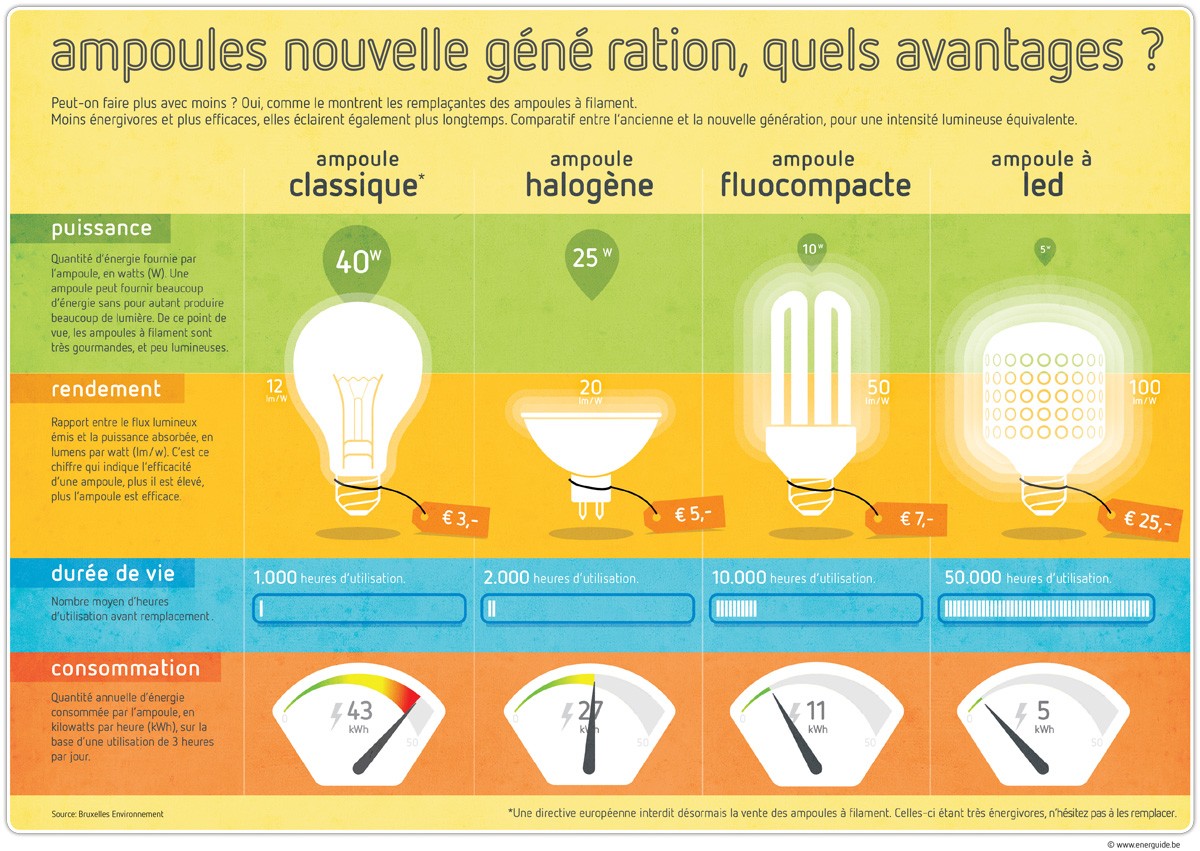

New-generation low-energy bulbs (compact fluorescent lamps, fluorescent tubes and LED) have two main advantages compared with conventional light bulbs.
Find out moreA comparative table helps you to find wich low-energy bulb or led can replace the traditional bulb and halogen bulb.
Find out moreThree types of low-energy bulbs have replaced incandescent light bulbs. These bulbs are available in various sizes and capacities. Find out what this means as regards the compatibility of the (screw) fittings.
Find out moreFrom now on the packaging of all light bulbs has to include an energy label. This label gives you information about the energy efficiency, the light output, the power and the lifespan of the bulb.
Find out more
Place a movement detector in areas where you don’t go very often (corridor, garage, etc.). The light will come on automatically when you go in, and switch off again when you leave. So you don’t have to worry about forgetting to switch off the light.
Do your children prefer to sleep with a night light? If so, use a low-energy bulb or an LED bulb.
A 1.5 W LED bulb can replace a conventional 25 W bulb!






